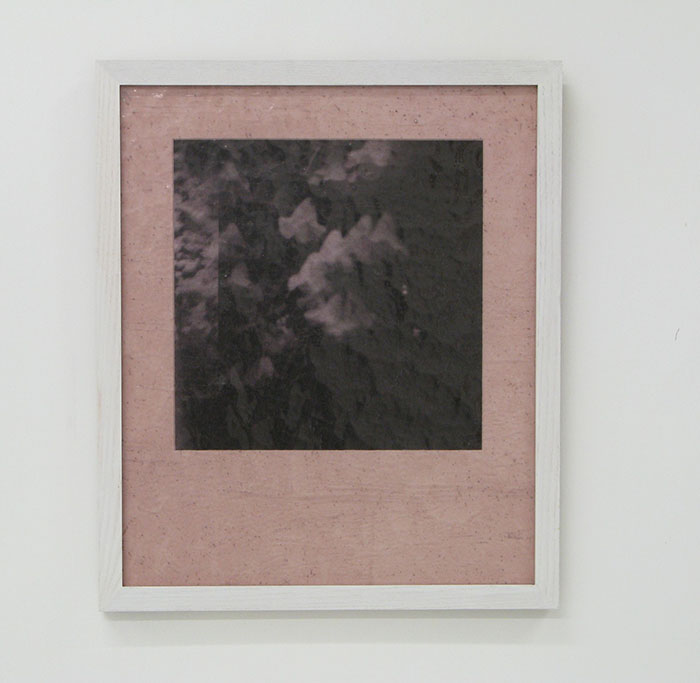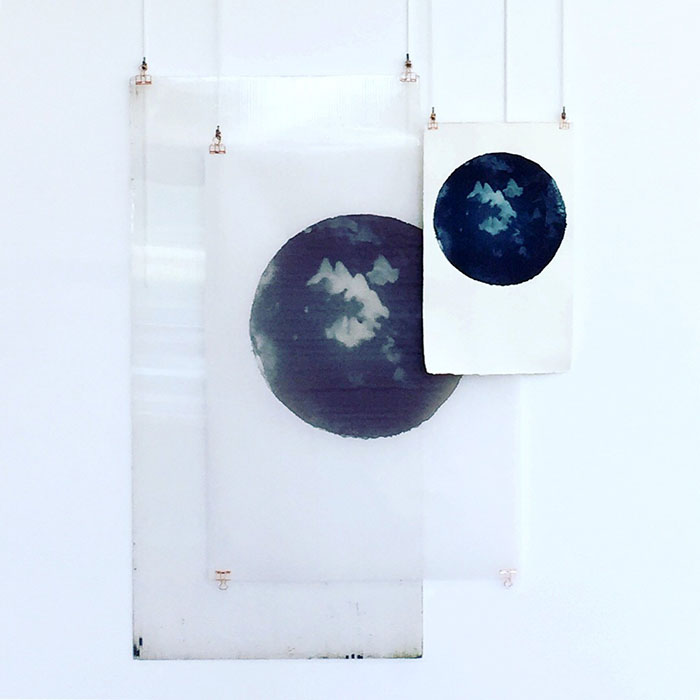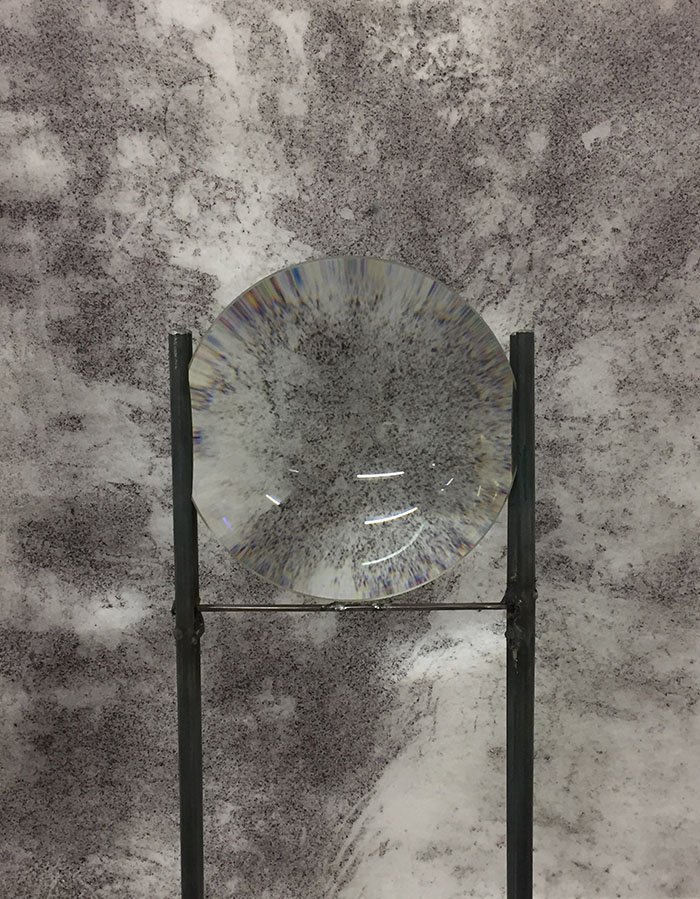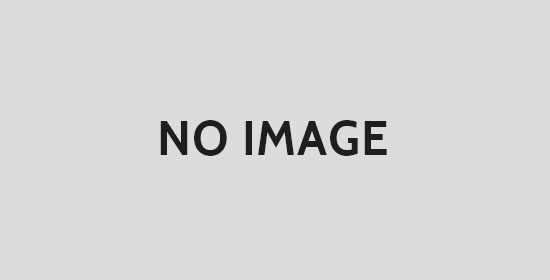Where are you based?
I am based in Haarlem Artspace in Wirksworth
How did your artwork start out?
I started working site specifically around 2011. I had been in art education at various points before that, and had read ‘The Poetics of Space’ By Bechelard on my first degree, and this informed my responses to place. I don’t work in this way now as much now but it was definitely my way in.

How do you get ideas for each piece of work?
I have a set of central concerns, drawing inspiration from natural ephemera, and exploring the photochemical mark are two. I am a print maker and use photographs in that process often, taking medium format film photos myself and then choosing from the images I have which to take forward into printmaking processes.
I then have ideas about ways of presenting these images, and how I would like people to perceive the images. These often mimic reflection, or I try to achieve this, often with mirrors. I play with these set-ups until they form a good position.
How do you go about transforming an idea like that into a piece of art?
Play is my main tool, I give myself lots of photos, prints or equipment to play with and test out different combinations of them. The blurred or washed over effect of an image that has passed through an imperfect lens translates, to me, to the recalled or remembered image. I’ll try to set things up to present images in that way. Sometimes however, the light through the lens itself is enough without including the image I started with, so I’m quite flexible with ideas, they change and mutate as I go along.
How has your practice evolved over the years?
As mentioned my practice was site specific at first, I really responded to the stories places have held and I love the history of them seeping through to the present. I started to realise however that time itself was what I was fascinated by, and our human experience of the world, the way that permeates it, and that each moment is an infinite multiplicity of experience if we see it through memory or different perspectives. So my practice is now no longer necessarily place based and I don’t feel I have a formula, which is good!

What does your practice aim to say to your audience?
I’d like for my work to feel like a glimpse into daydream or a reflecting experience, those moments when you feel outside of time. However if an audience experiences other things I don’t mind, as it moves more into sculpture it may be more an experience of form, the phenomenology of reflection, or light.
What is the most challenging about your work?
For me, it’s to catch the tail of an idea and change it into material form before it slips away. For others I am not sure.
Where did you get your ideas from (what, if any, sources did you use)?
Ideas start from my own medium format photos, looking at the work of other artists, and from reading fiction or poetry.
Looking back at your old works, what you do think about them now?
There are key moments that I am really happy with and I use them to steer my course. I don’t have a good memory for the works that were not a success to me.

How and when have you decided to investigate themes that explore memory using light through water, and the effects of the disembodied image?
I have always thought about memory, and collective memory, and our experience of it, and I have always taken photos of light patches, light through windows and reflections. I also have always used projection since I can first remember discovering a slide projector. These things have sort of slowly combined over time.
What is the most interesting or inspiring thing you have seen or been to recently, and why?
Tai Shanni’s exhibition at the Tetley in Leeds I felt touched the inner core of me. This was to do with its feminine power, and the way so many different ways of working where intertwined again. The use of monologues, storytelling, and the voice is such an archaic ancient thing, this perhaps connects with being human in its deepest sense and I felt very affected by it. The use of both fiction and nonfiction text was great to see. The way this was interwoven was really exciting. I draw from fiction a lot, and am always trying to find other artists who use it in their work.
Which other photographers’ work do you admire, and why?
Jaromir Funke, he also explores the effects of light and reflection and form. It’s beautiful.
How do you see The Institute of Reminiscence, as an experience, to support your career?
Having a dedicated period of work is invaluable, especially in a supportive culturally active environment like Artcore. The time period of a residency means you are more consciously productive and have the extra context of the theme to think of. This residency is really very relevant to my practice and the themes within it so will assist the development of my work. This year I want to propel the aesthetics of my work forward by using this period of intense making and researching.

What’s next for you in the future?
I hope to make enough work in this part of the year to exhibit later on, and to pursue my own research.



Leave a comment